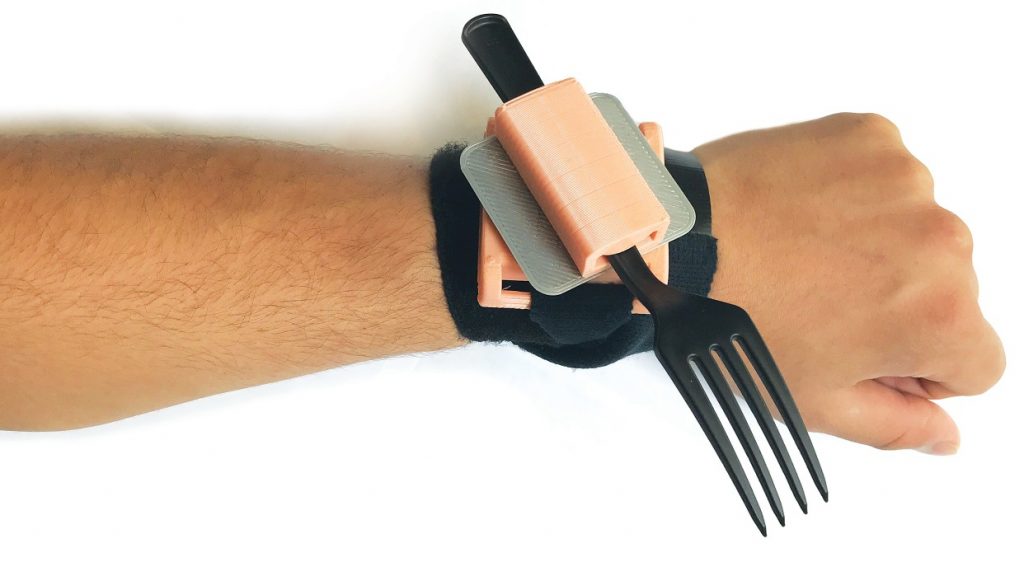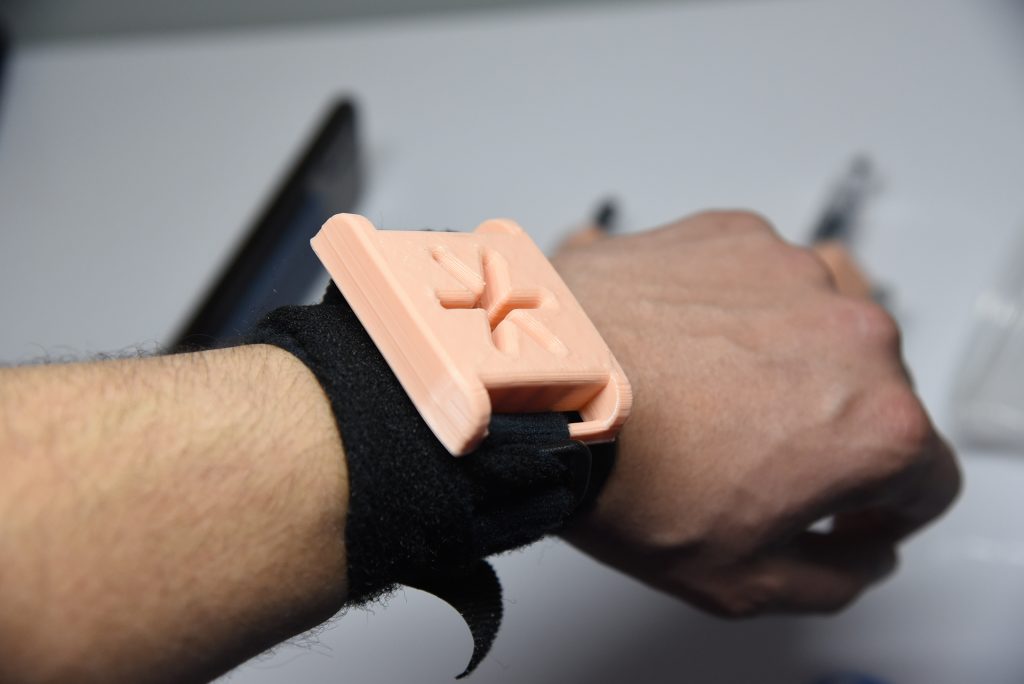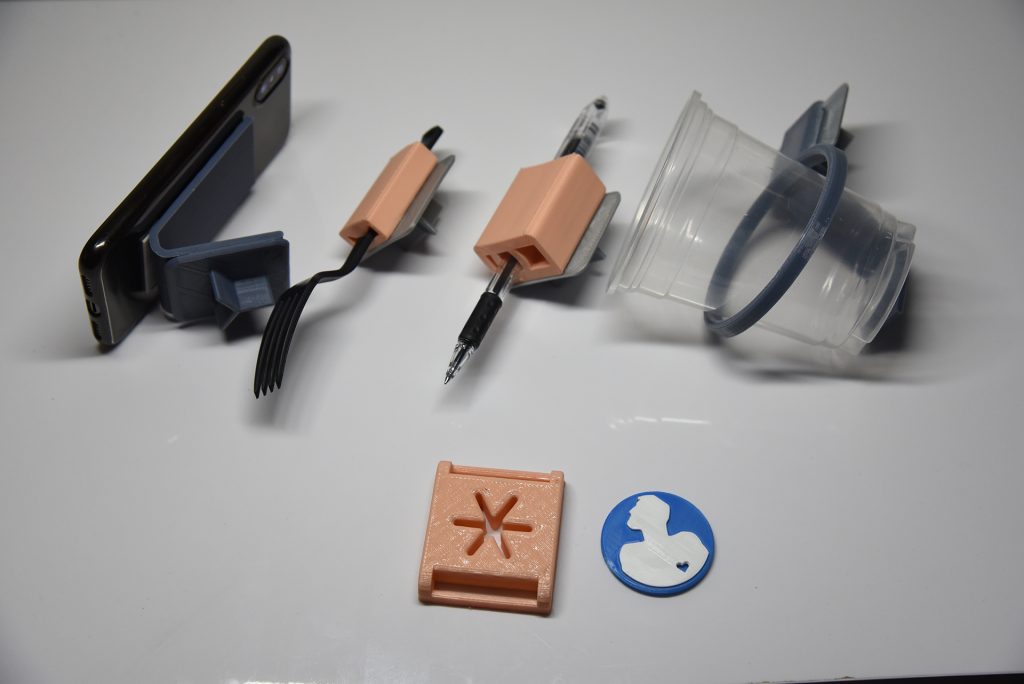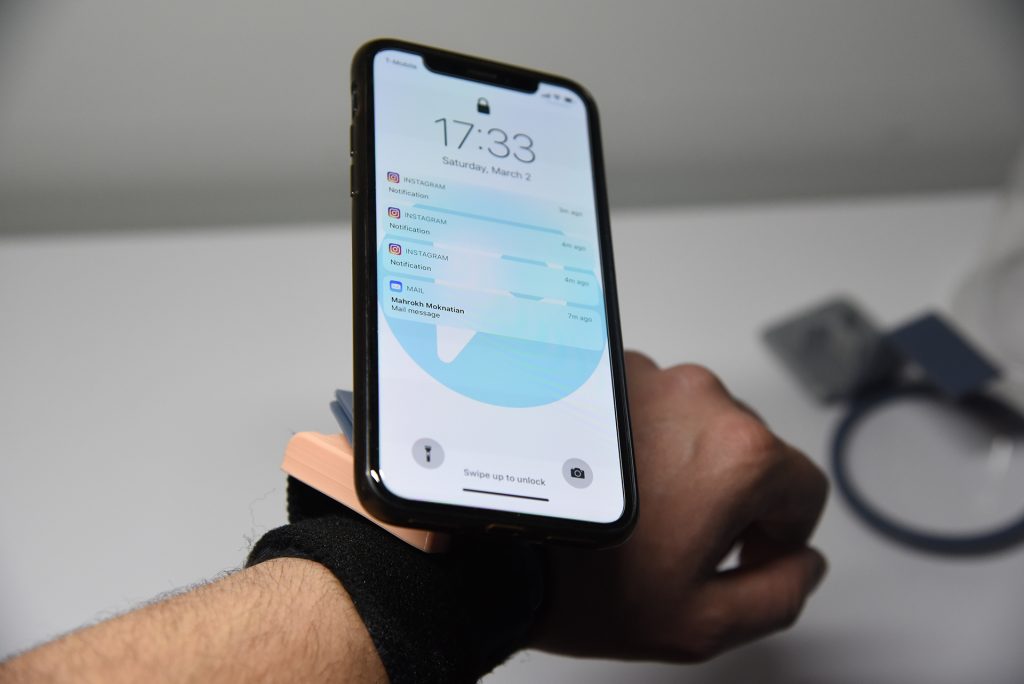


Why do you do this?
My mission is to identify most needed subjects and share it with colleges and have them fund their students to solve those problems. Allowing amputees to purchase designs online was a great decision because they want to be treated normally as opposed to receiving prosthetics for free as charity.
Some amputees don’t know for example they can play guitar… if they request on the website, some engineer can design them the right attachment! We’re giving amputees a chance to do anything they thought they could not do! I believe I can affect many lives world wide by giving them the opportunities they haven’t had.
What progress have you made?
So far I have designed an attachment that can apply to any kind of partial arm single amputee. This attachment is open-source, meaning that any engineer or designer can design a new attachment and upload on the website to share. I am currently working on another 3D printable assistive device that is designed for double amputees with both partial arms. To allow them to put on different attachments without another’s help. It is a very basic mechanical snapping feature. Right now I am mostly trying to invite more engineers and designers to the community and link with organizations who support amputees.

What’s holding you back?
I am a full-time H1B employee, I cannot quit my job to fully focus on this. And I haven’t discussed fund raising with any venture capital. My focus is to gather more designs and contact communities who are support amputees, to collect more requests from amputees.
What printers and material do you use?
I have a Creality Cr-10, I mostly use PLA. I am trying to save some money to buy SLA printer and print standard resin, rough, durable and flexible. I have 3 3D printers at work, I am the head designer of a company in Long Island. After I introduced 3D printing to this company, we slashed our prices by 30% and saved thousands of dollars in prototyping our new products.
Subscribe to Our Email Newsletter
Stay up-to-date on all the latest news from the 3D printing industry and receive information and offers from third party vendors.
You May Also Like
3D Printing Financials: Fathom Struggles in Financial Quicksand During Critical Transition
Facing a year of key transitions and financial pressures, Fathom (Nasdaq: FTHM) has filed its annual report for 2023 with the U.S. Securities and Exchange Commission (SEC). The document outlines...
Latest Earnings Overview for Australian 3D Printing Firms Titomic and AML3D
Australian 3D printing manufacturing firms Titomic (ASX: TTT) and AML3D (ASX: AL3) reported their financial results for the period from July to December 2023, marking the first half of their...
3D Printing Webinar and Event Roundup: April 7, 2024
Webinars and events in the 3D printing industry are picking back up this week! Sea-Air-Space is coming to Maryland, and SAE International is sponsoring a 3D Systems webinar about 3D...
3D Printing Financials: Unpacking Farsoon and BLT’s 2023 Performance
In the Chinese 3D printing industry, two companies, Farsoon (SHA: 688433) and Bright Laser Technologies, or BLT (SHA: 688333), have recently unveiled their full-year earnings for 2023. Farsoon reported increases...































